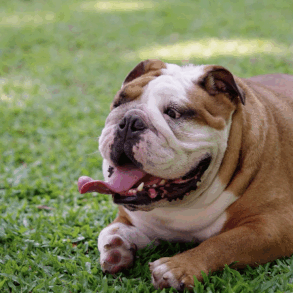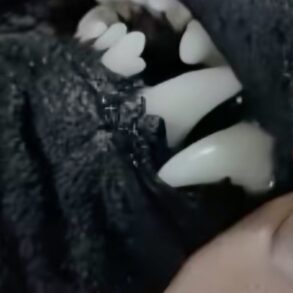
Have you ever wondered why dog brains exhibit such a wide range of behaviors across breeds? Or why the tiny chihuahua, despite its small stature, seems to have as much personality as the large, stoic St. Bernard?
In the world of mammals, a larger brain size typically indicates advanced cognition. However, our loyal companions, domestic dogs, seem to defy this logic.
Dogs have brains that are, on average, 20% smaller than their wild ancestors, the gray wolves. However, domestic dogs showcase a variety of cognitive skills that are on par with – and sometimes even surpass – the wolves’ capabilities.
This discrepancy challenges some of our conventional assumptions about the connection between brain size and intelligence.
Dog brains and their size
Researchers from the University of Montpellier, the University of Zurich, Naturhistorisches Museum Bern, and many other institutions recently embarked on a study to decipher the canine mystery.
The team set out to examine the potential link between breed function, behavior, and relative endocranial volume (REV) – an indicator of relative brain size.
The study included data from 1,682 dogs across 172 breeds, offering a diverse sample. A consistent method of measuring endocranial volumes was used across all dogs, ensuring reliable and accurate results.
Breed categorization was done based on traditional functions outlined by the American Kennel Club, with further analysis of phylogenetic clades. This comprehensive approach allowed the researchers to assess how historical and genetic factors play a role in brain morphology.
Correlation or causation?
The results showed a noteworthy correlation between relative endocranial volume and breed function, body size, phylogenetic clade, and cranial shape.
However, an interesting twist emerged – the correlation between cranial shape and REV was surprisingly weak. It turns out that skull shape alone is not a strong predictor of the size of the brain within.
Dog behavior and brain size
Surprisingly, relative endocranial volume was found to increase with fear, aggression, attention-seeking, and separation anxiety, yet was found to decrease with trainability.
Curiously, our tiny toy breeds, typically bred for companionship, possess the largest relative brain sizes compared to their body mass.
In contrast, working breeds, often selected for complex tasks like guarding, rescue, and policing, exhibit the smallest relative endocranial volume.
This inverse relationship suggests that complex skills, traditionally associated with higher cognition, don’t necessarily require larger brains in dogs. What’s more, cooperative behaviors showed no significant correlation with relative endocranial volume.
The researchers used the Canine Behavioral Assessment and Research Questionnaire (C-BARQ), covering a broad spectrum of temperaments, from trainability to various forms of aggression and fear responses.
The study’s intriguing findings reveal the intricate relationship between a dog’s brain structure, behavior, and breed. It suggests the incredibly adaptability of brain size under domestication and the pressures of artificial selection.
The project was led by Dr. Anne-Claude Gingras of the University of Zurich, whose extensive work in the field of canine behavior and morphology played a significant role in this study.
Implications for breeding and training
The research findings have significant implications for both breeding practices and training methodologies.
Understanding the relationship between brain size, behavior, and breed function can refine breeding strategies to enhance specific traits without relying solely on physical attributes.
For instance, selecting for desirable behaviors such as sociability or ease of training could be more effectively achieved by considering a breed’s endogenous cognitive tendencies rather than focusing only on size or strength.
Moreover, trainers could tailor their techniques based on a deeper awareness of the intrinsic behavioral propensities associated with different breeds, maximizing the potential of each dog through customized training regimes.
Future research on dog brains
The study opens new avenues for research into canine cognition, emphasizing the complexity of the relationship between brain morphology and behavior.
Future investigations could expand the range of behaviors examined, incorporating modern techniques such as neuroimaging to delve deeper into the functional aspects of canine brains.
Longitudinal studies might explore how domestic dogs’ cognitive abilities evolve over time and in response to different environmental influences or societal changes.
Additionally, comparative studies across other domesticated species may yield insights into the broader processes governing brain evolution in response to domestication.
Through continued exploration, scientists can deepen our understanding of the domestication process and the unique capacities of our canine companions.
The study is published in the journal Biology Letters.
—–
Like what you read? Subscribe to our newsletter for engaging articles, exclusive content, and the latest updates.
Check us out on EarthSnap, a free app brought to you by Eric Ralls and Earth.com.
—–
This post was originally published on this site be sure to check out more of their content.













































